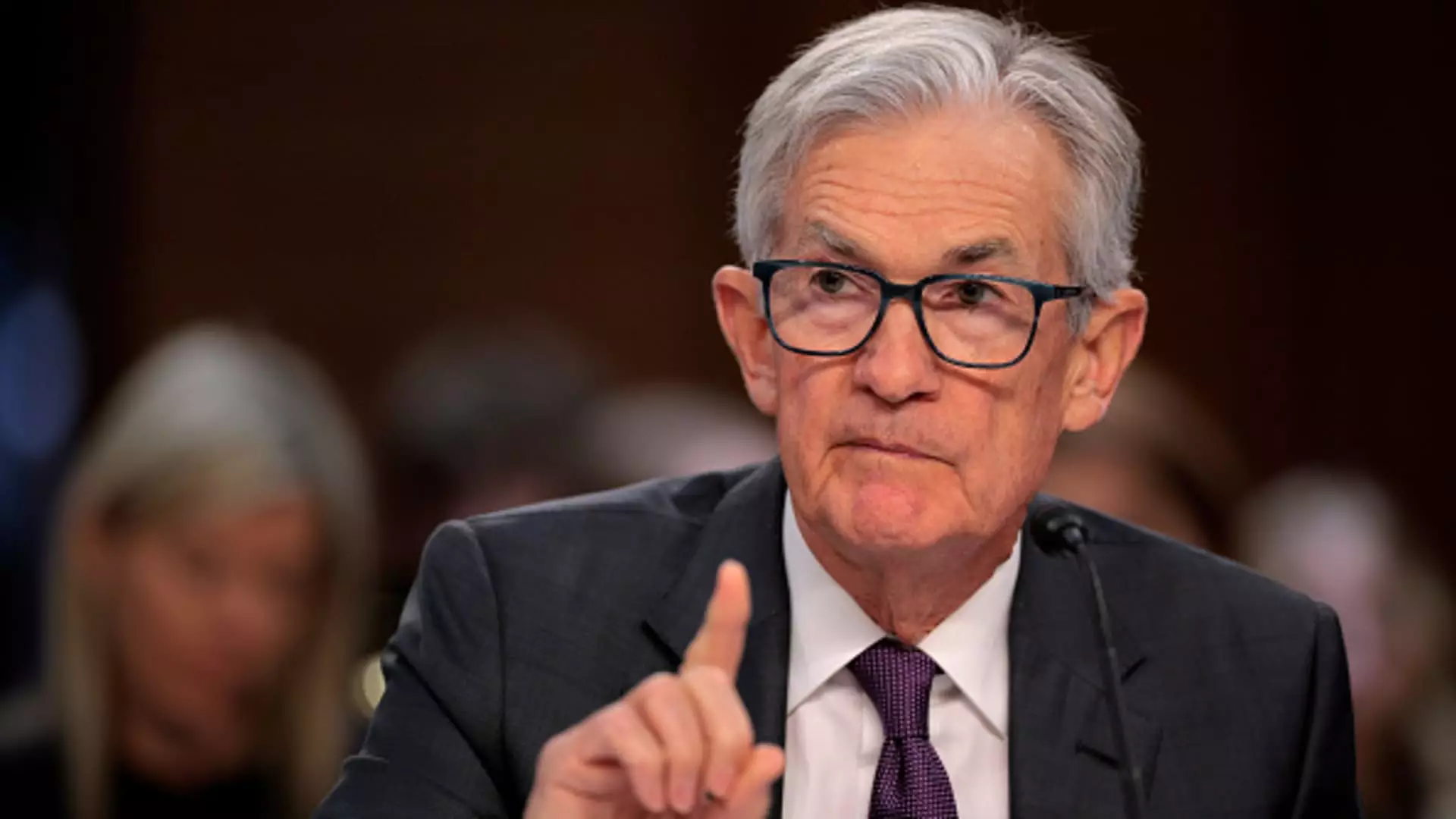In early January, the Federal Reserve’s decision-making process revealed a cautious stance towards monetary policy adjustments as inflation lingered above the desired threshold of 2%. The minutes from the Federal Open Market Committee (FOMC) meeting showcased a unanimous agreement among members to maintain the key policy interest rate, following a series of three consecutive cuts that had amounted to a full percentage point in 2024. This seemingly cautious approach underscores the Fed’s dual mandate of managing inflation while promoting maximum employment, especially in light of the ongoing economic repercussions tied to external factors, such as tariffs implemented by the Trump administration.
One of the primary concerns voiced by Fed officials centers around the adverse impacts of President Trump’s tariffs, particularly as the administration threatened to impose additional duties on sectors like automobiles, pharmaceuticals, and semiconductors. These anticipated increases could potentially lead to a spike in consumer prices, making it even more challenging for the Federal Reserve to navigate its inflation goals. The nature of tariffs often reflects a balance between raising revenue and protecting domestic industries, but they also carry the risk of escalating inflation. Such complexities complicate the economic landscape, prompting Fed policymakers to stress the importance of observing economic activity and inflationary trends before taking further action on interest rates.
With the current policy environment characterized as “significantly less restrictive” compared to previous periods, FOMC members highlighted the necessity to afford themselves time to gauge evolving economic conditions. The prevailing sentiment indicated that while the Fed’s approach allowed for careful evaluation, the effectiveness of current policies remains contingent upon maintaining near-maximum employment. Importantly, Fed officials expressed the need for tangible progress regarding inflation before initiating any subsequent changes to the federal funds rate.
The dual pressures stemming from tariff increases and an uncertain trade environment have only added to the complex situation. While tariffs aim to foster national economic objectives, the unintended consequence may be heightened inflation, contradicting the Fed’s goal of price stability. Consequently, ongoing discussions within the Fed extended to the potential ramifications of trade and immigration policy changes, as well as strong consumer demand that may further amplify inflation risks.
In the face of these challenges, market reactions have largely mirrored the Fed’s cautious optimism. Despite concerns regarding tariffs and inflation, participants noted a resilience in the economic outlook. Anticipation surrounding potential regulatory rollbacks and tax policy adjustments fostered a sense of optimism among economists and market analysts alike. This optimism, however, must be measured against the backdrop of rising costs and uncertainty that could stymie economic progress.
The mixed signals within inflation indicators present an additional layer of complexity. For instance, while consumer prices showed unexpected increases in January, the wholesale price index suggested that pipeline pressures remained softer. Thus, while the Fed Chair Jerome Powell has generally refrained from speculating on tariff impacts, other officials have acknowledged the need for careful analysis, recognizing that trade policies could hinder timely monetary interventions.
As the Federal Reserve grapples with its approach in a rapidly changing economic climate, the interplay of fiscal and trade policies emerges as a critical factor influencing future decisions. Despite the current benchmark overnight borrowing rate being set between 4.25-4.5%, expectations among market participants speculate on further rate reductions potentially arriving as early as July or September. Still, the looming uncertainties surrounding tariffs, inflation, and broader economic activity necessitate a nuanced approach.
The Federal Reserve’s path appears riddled with challenges as officials strive to balance between fostering economic growth and exercising prudent monetary policy. The macroeconomic landscape—shaped by external trade pressures and evolving fiscal policies—demands a continuous reevaluation of the strategies employed by the Fed. As these issues unfold, only time will tell how effectively the Federal Reserve can maintain price stability while nurturing a robust labor market.

